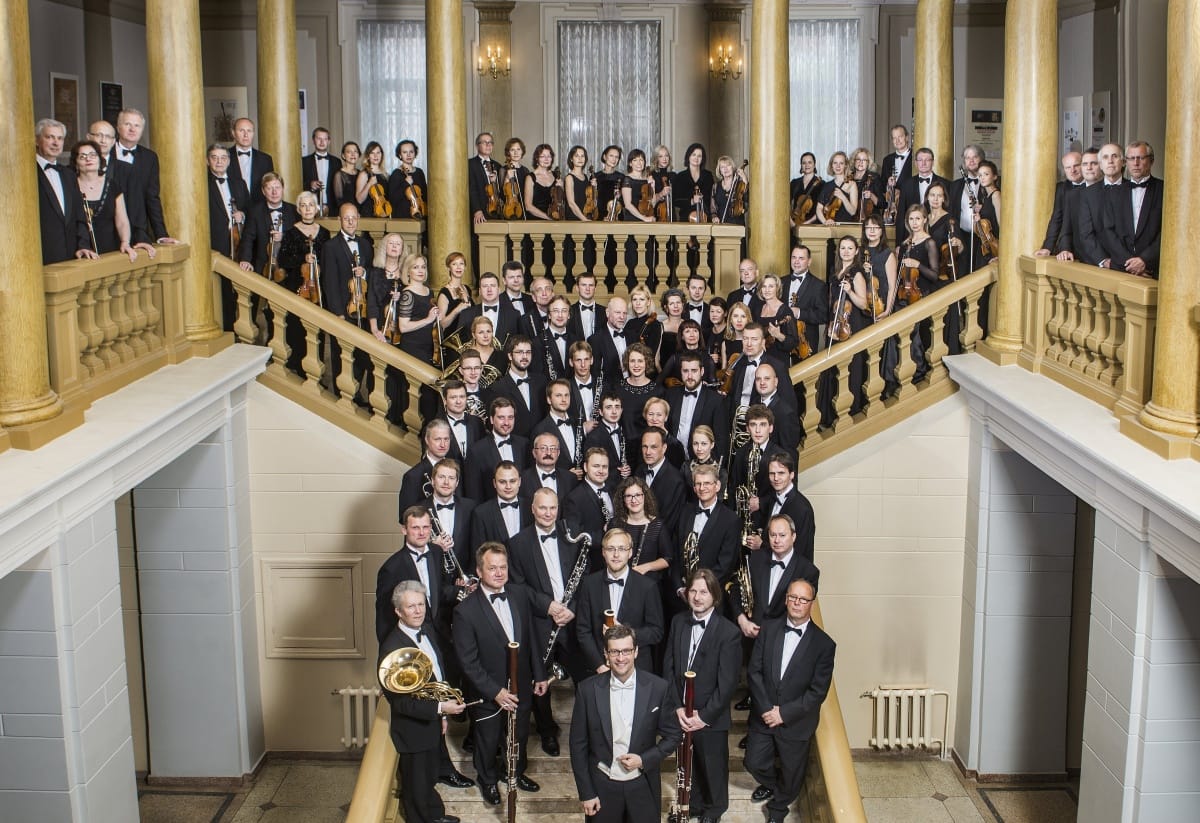From Strength to Strength

The Lithuanian National Symphony Orchestra has been active in the music festival circuit in Europe and beyond for over seven decades. Ahead of its performances at the NCPA, we take a look at how the orchestra has carried forward its rich heritage. By Beverly Pereira
Since 1940, the Lithuanian National Symphony Orchestra (LNSO) has played a vital role in the development of Lithuania’s art and culture. The orchestra’s roots can be traced back to the Vilnius City Symphony Orchestra, founded by eminent Lithuanian composer, conductor and pianist Balys Dvarionas in 1940 during the Soviet annexation of Lithuania. As it fostered the artistic endeavours of Lithuanian composers and performers, the orchestra steadily gained a reputation for its incredible brilliance. Today, the 96-piece LNSO occupies a prestigious position at the Lithuanian National Philharmonic Society in Lithuania’s capital city of Vilnius. Not only is it widely recognised as the country’s prime orchestra, but it is also ranked high as one of Europe’s most notable professional orchestras.
An unbroken bond
Lithuanian conductor Juozas Domarkas, who enjoys a longstanding history with the LNSO, was appointed as the orchestra’s honorary conductor in 2015. His association with the LNSO goes back all the way to 1964, when he was invited to conduct and direct the orchestra during the last year of his studies at St. Petersburg Conservatory. Having taken to the podium, replacing Dvarionas, he tirelessly led the orchestra through intense periods of cultural and political unrest. Under the baton of a young Domarkas, the orchestra exposed the audiences to a number of large-scale classical works that were previously not heard of in Lithuania. These included Beethoven’s Ninth Symphony and Missa solemnis, Mahler symphonies and important works by Stravinsky.
It can be said that the adeptness of the LNSO musicians was directly influenced by Domarkas and his artistic abilities. He took the orchestra to new heights, which led to a remarkable first international tour in Poland in 1969. The orchestra gained international recognition for its ability to perform some of the most complex symphonic scores during the 1970s. It was also during this period that scores of invitations to perform at distinguished concert halls in Moscow, St. Petersburg and beyond began to pour in.
The LNSO embraces works under the oratorio genre and symphonic opuses of the past, as well as modern contemporary music particularly by Lithuanian composers.
It was only after the restoration of Lithuania’s independence in 1990 that the orchestra was officially named the Lithuanian National Symphony Orchestra. The newly regained sense of independence also paved the way for the LNSO to make headway in most of Europe and Japan. Domarkas continues to be lauded as one of the country’s most experienced conducting teachers and performers. He remains highly respected for his perseverance and vitality in nurturing a symphony orchestra with a high artistic standard. He can also be credited for the widespread presence of Lithuanian music, thanks to the many recordings by record companies like Melodiya, among others, which were released in Lithuania and abroad.
Creating milestones
It is no wonder then that the storied orchestra has ceaselessly attracted a roster of celebrated conductors, including Mstislav Rostropovich, Kurt Masur and Christoph Eschenbach. Over the last few years, LNSO has worked with some of the world’s leading performers like pianist Freddy Kempf, opera singer Jessye Norman, and conductor, violinist and violist Yuri Bashmet. The LNSO has also presented concerts at prominent European music festivals. It has graced prestigious stages such as the Musikverein in Vienna, Moscow Conservatory Great Hall, Barbican Centre in London, Cologne Philharmonic, Concertgebouw in Amsterdam, Kölner Philharmonie in Germany and Tokyo’s Suntory Hall. In 2013, the orchestra toured South America for the first time, besides performing in the ceremonial opening and closing of the Lithuanian Presidency of the European Council at the Klara Festival in Brussels and the Bialystok Philharmonic in Poland.
Leading the way
It has been a busy few months for the LNSO. But that’s far from unusual, given that the LNSO plays approximately 50 concerts a year. It embraces works under the oratorio genre and symphonic opuses of the past, as well as modern contemporary music particularly by Lithuanian composers. The orchestra prepares and performs symphonic music programmes in the National Philharmonic in Vilnius and in other Lithuanian cities. It regularly participates in Gaida, the annual contemporary music festival that premieres the works of Lithuanian composers.
The LNSO is currently led by Modestas Pitrenas, a highly accomplished Lithuanian conductor, who has held the position of principal guest conductor and artistic director since 2014. Pitrenas is the principal guest conductor of the Latvian National Opera (LNO) and — having extensively worked in opera — is the conductor of the Lithuanian National Opera and Ballet Theatre (LNOBT). He has presented symphonic opuses by Tchaikovsky, Lutosławski and Mahler with the LNSO, Latvian National Orchestra, Krasnoyarsk State Orchestra and the Lithuanian Chamber Orchestra over the years and has toured with these orchestras across Europe and in China and the US. The LNSO also works under the highly accomplished baton of conductor Robertas Šervenikas, who was appointed as its second conductor in 1993 and has since led the orchestra at some of Europe’s biggest music festivals.
Come October, the LNSO, led by Pitrenas, will perform familiar favourites such as Brahms’s Symphony No. 4 and Hungarian Rhapsody by Liszt. The celebrated orchestra will also perform In the Forest, the earliest Lithuanian example of a symphonic poem, composed by the popular Lithuanian composer Mikalojus Konstantinas Čiurlionis. Spread across two evenings, these performances will astonish and delight lovers of classical music in equal measure.
The Lithuanian National Symphony Orchestra will take the stage on 10th and 11th October at the Jamshed Bhabha Theatre.
This piece was originally published by the National Centre for the Performing Arts, Mumbai, in the October 2017 issue of ON Stage – their monthly arts magazine.





